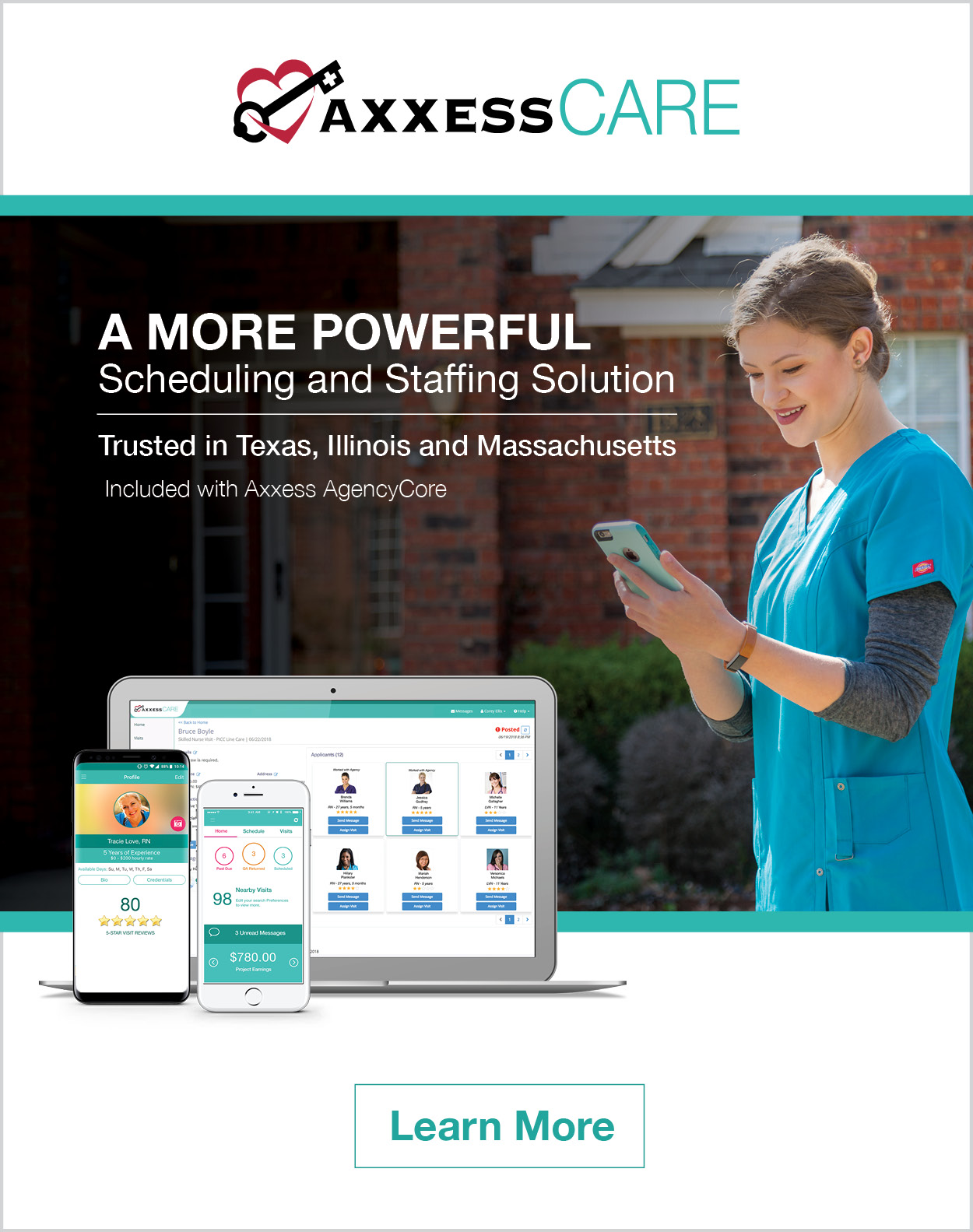
Paperless patient claims or “electronic claims” are generated and transmitted electronically to a health insurer or third-party payer for processing and payment. This transaction reduces unnecessary administrative strain, reduces claim denials and lessens the expense involved with processing and submitting manual claims. Though this type of transaction comes with many benefits, there are some things to consider that require diligence so they do not cause issues for providers in the future.
Correct Payer Setup
First and foremost, once a provider makes the decision to begin submitting claims electronically, the payer set up within the agency’s EMR software (such as Axxess) must be correct. If this is not done, it will cause claim rejections that will result in delayed payment for services. For example, episodic claims can only be submitted under a bill-type of “institutional” and paper claim on a UB-04. While per visit claims can have an electronic bill type of “professional” and a paper claim on a HCFA-1500 or “institutional” bill type with a paper claim on a UB-04.
Complete All Necessary Forms
An Electronic Data Interchange (EDI) enrollment form must be completed prior to submitting claims electronically if the payer requires enrollment prior to EDI submission. This agreement must be approved by all parties; the healthcare provider, the clearinghouse and the payer. If the provider is not credentialed with the payer, the enrollment will be rejected, and no EDI transactions can take place. If the enrollment is completed incorrectly or is not completed fully, this will cause a delay in the ability to submit claims electronically, again resulting in delay of payment.
Claims Clearinghouse
Once a file is created as an 837I or 837P the claims are sent either directly to the payer or through a clearinghouse. A clearinghouse is the “central hub” where all claims are sorted and directed onward to all the various payers. Once the claim has been received, some clearinghouses will scrub the claims for errors before sending them to the appropriate parties. This is not the case with all clearinghouses, so it is important to know if claim validation services are included.
A simple human mistake often can cause big problems. Submitting claims directly at the payer’s website means manually keying transaction data repeatedly. Missing a value code, FIPS or CBSA code, setting up the payer under the incorrect Source of Payment and Insurance/Payer Type can cause a claim rejection or denial also.
Expert Revenue Cycle Management Services
Having a team of EDI experts is crucial to help with successful payer setup when billing electronically. Axxess offers revenue cycle management services and solutions that support timely billing. With a direct connection to many payers, including Medicare, electronic claims submitted through Axxess software are paid faster than using traditional clearinghouse services. Using automation and electronic claims submission, providers will be able to be paid for the care they provide much faster and increase cash flow to grow business.

